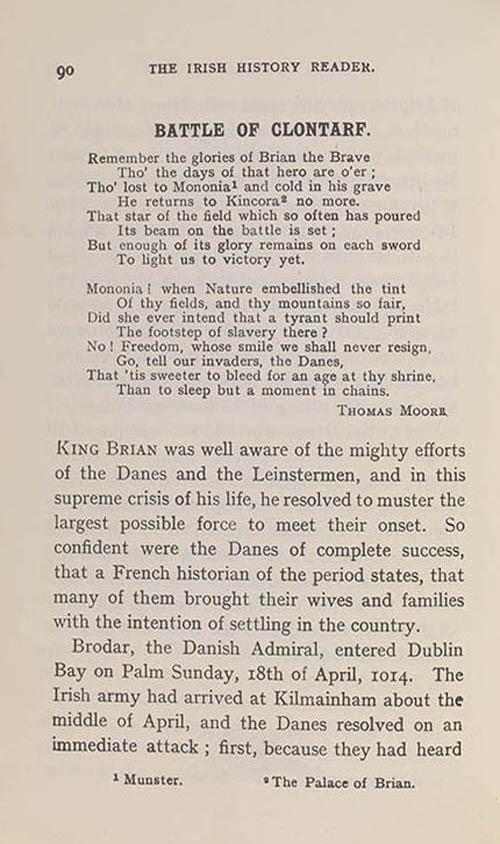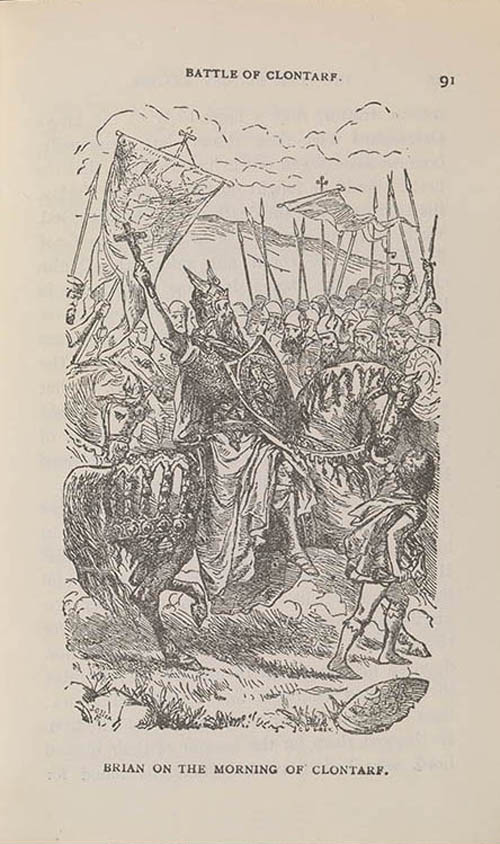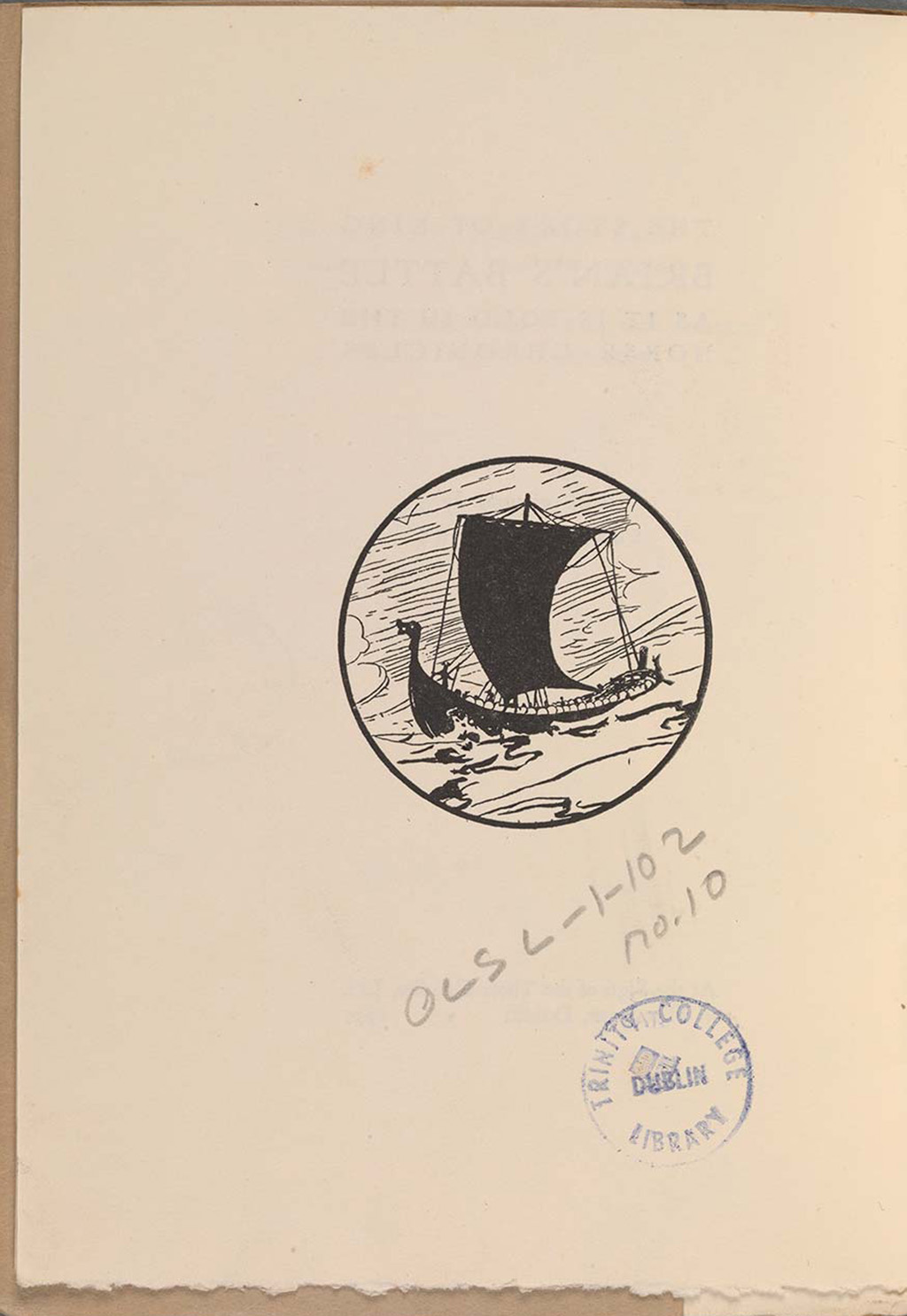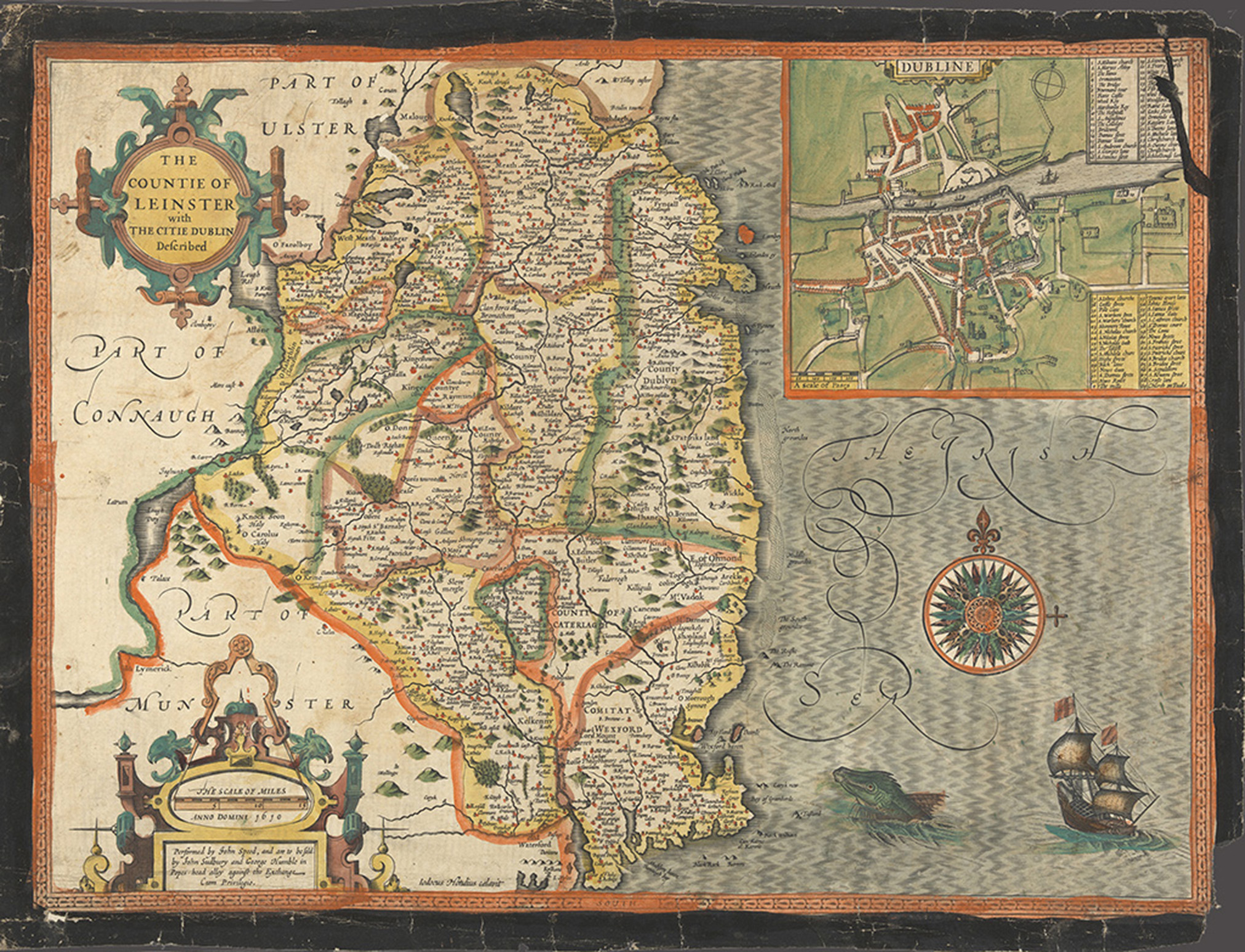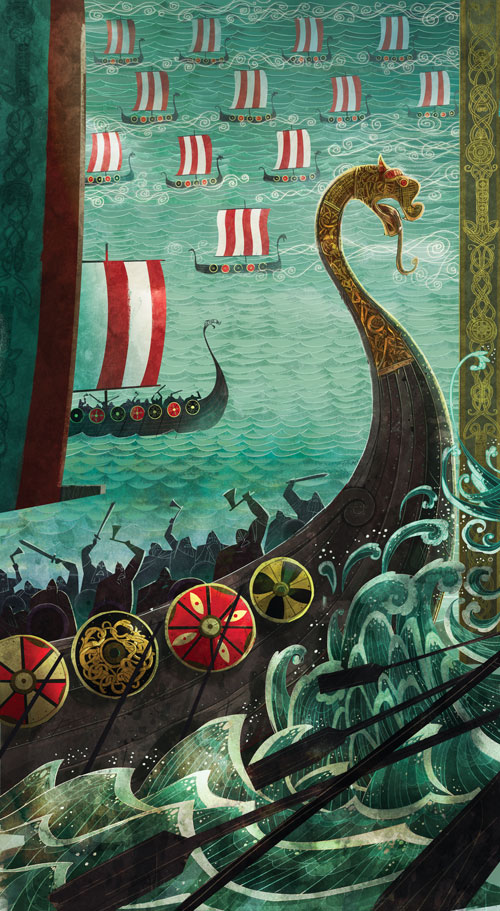Battle of Clontarf: Naval Reinforcements
The warfare that began in 1013 culminated in Brian’s final conflict on Good Friday 1014 — the Battle of Clontarf. Brian assembled an army drawn from his native Munster with allies from south Connacht.
Brian’s opponents were led by the king of Viking Dublin (his son-in-law Sitriuc) and the king of Leinster (Máel Mórda, a brother of Brian’s ex-wife, Gormlaith). They were reinforced by a large contingent of Vikings, which included one of the most powerful leaders of the Scandinavian world, Earl Sigurðr the Stout of Orkney.
Irish History Reader
The Christian Brothers
Dublin and London, 1916
OLS POL S 138 pp 90-1
A text book produced by the Christian Brothers, the Irish religious order, for pupils aged 10-11 years old. It promoted a nationalistic and Roman Catholic understanding of Irish history, intended to inspire pupils ‘to help the cause of Faith and Fatherland’.
The Story of King Brian's Battle as it is told in the Norse Chronicles
George Webbe Dasent and Colm O Lochlainn
Dublin, 1933
OLS L-1-102 no. 10
This modern retelling of the Battle of Clontarf is based on medieval Norse sagas of the 13th and 14th centuries. According to Orkneyinga saga (History of the Earls of Orkney), the Raven Banner of Earl Sigurd of Orkney was destined to bring victory to its owner, but death to whomever carried it.
In Brennu-Njáls saga (The Saga of Burnt Njáll), Earl Sigurd was killed during the Battle of Clontarf while carrying the banner.
The Countie of Leinster with the Citie [of] Dublin Described, by John Speed cartographer
1610
TCD MS 1209/7
The area around Clontarf where the battle was fought was well outside the city of Dublin; this map shows that it remained so 600 years after Brian’s time. Dublin bay was much wider than it is now. Its large tidal shallows were a danger to shipping, which may have caused problems for the overseas reinforcements of Brian’s enemies.
John Speed (1551/2-1629) was one of the most famous cartographers of his day. The smaller map of Dublin shows Trinity College (founded 1592), which then lay at the eastern edge of the city.

